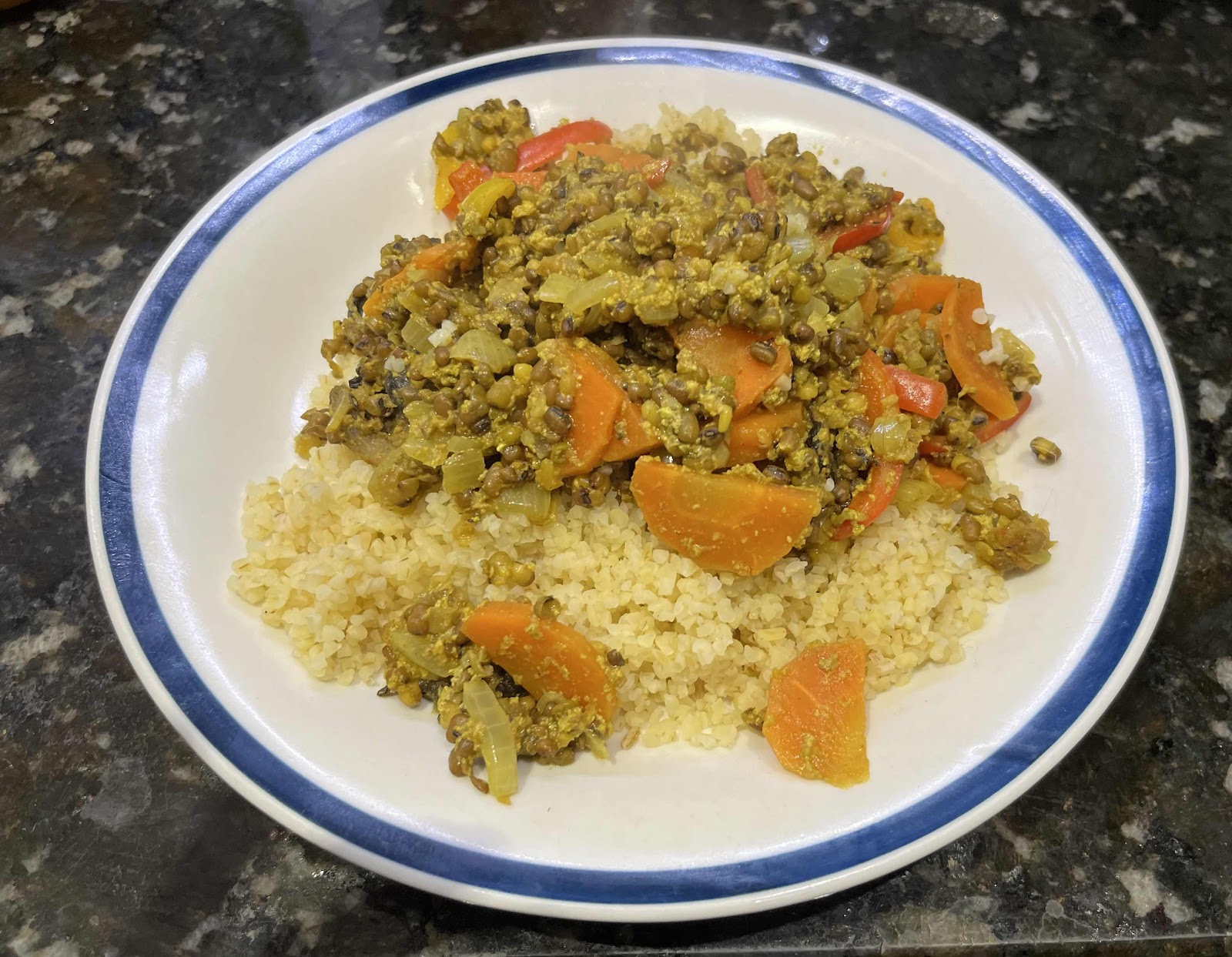This is one of those recipes that came off the back of the packet. I’ve been cooking it for 30+ years. I don’t remember why we had a packet of mung beans in the cupboard - Dumbo, the long-ago ex, bought them and made something unmemorable with about half the packet - but, I do remember noticing this recipe on the back and deciding to give it a go. I saved that plastic packet for years and referred to it regularly. Sadly, it disappeared after we packed up the kitchen for building works back in 2012. This is from memory.

Enjoy!
Mung Bean Curry (serves 4)
Ingredients
175g/6oz dried mung beans - not split mung dhal, but the whole bean
1L approximately of boiling water
1 tablespoon oil
1 medium sized onion, chopped
1 large clove garlic, garlic
100-150g mushrooms, sliced
2 peppers/capsicums, sliced
1 medium carrot, halved lengthwise and sliced
1 cup plain yoghurt
Spices
1 teaspoon ground chilli (or to taste)
1 teaspoon ground cumin
1 teaspoon ground coriander
1 teaspoon turmeric
1 teaspoon corn flour
Pinch of salt
Bulgar Wheat (see notes below)
1 cup bulgar wheat
2 cups boiling water
Pinch of salt
Method:
- Start by cooking your mung beans: pour them into a sieve and rinse off any dust with cold, running water. Then place in a saucepan, cover with sufficient boiling water to ensure that there’s 2.5cm/1inch of water to cover the beans, bring to the boil and simmer for approximately 25 minutes or until soft. Once cooked, drain the beans. While the beans are cooking, get on with preparing the rest of the dish.
- In a small ramekin, assemble the spices. Add a couple of tablespoons of cold water and mix to a paste.
- Heat the oil in a large saucepan or frying pan. Gently fry the onion until it is soft and glassy.
- Add the mushrooms, peppers and garlic. Fry until soft.
- Stir in your spice paste. Fry until the aroma rises and then fold in the yoghurt. Add the carrot and keep stirring, until heated through. Switch off until the mung beans are cooked.
- When the mung beans are cooked and drained, stir them into the curry mixture. Bring back to the boil and simmer for 20 minutes.
- Meanwhile, rinse out the saucepan used for the mung beans in hot water. In it, combine 1 cup of bulgar wheat, with 2 cups of boiling water and a pinch of salt. Bring back to the boil. Cover and switch off. Leave undisturbed for 15 minutes or until all the water is absorbed..
- Serve.
Notes:
- My favourite “filler” these days is bulgar wheat, instead of rice. Yes, it’s more expensive BUT it has 3 advantages: 1) it is even easier to cook (see point 7 above); 2) it bulks out to a larger volume than rice, so I only need to use 1 cup instead of 1.5 for 4 portions; 3) it has 8 times the fibre and 4 times the protein of brown rice!
- If you want to serve this curry with rice: use 1.5 cups of white/basmati rice together with 3 cups of boiling water, cover, boil for 2 minutes, switch off and leave for 15 minutes or until all the water is absorbed.
Enjoy!
- Pam





